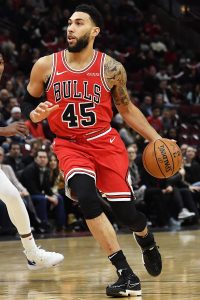Teams with the cap room necessary to make a trade work don’t need to abide by the traded player exception rules. However, if a team makes a deal that will leave its total salary more than $100K above the salary cap, the club can use a traded player exception to ensure the trade is legal under CBA guidelines.
There are two different types of traded player exceptions used in NBA deals. One applies to simultaneous trades, while the other applies to non-simultaneous deals. In a simultaneous trade, a team can send out one or more players and can acquire more salary than it gives up. In a non-simultaneous trade, only a single player can be dealt, and the team has a year to take back the equivalent of that player’s salary, plus $100K.
Let’s look into each scenario in greater detail….
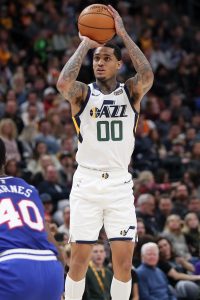 In December, the Jazz sent Dante Exum and a pair of second-round picks to the Cavaliers in exchange for Jordan Clarkson. Exum’s salary for 2019/20 is $9.6MM, which means Utah was eligible to take back up to $14.6MM — Exum’s $9.6MM salary, plus $5MM. Clarkson is earning $13,437,500 this season, so he fit within that limit.
In December, the Jazz sent Dante Exum and a pair of second-round picks to the Cavaliers in exchange for Jordan Clarkson. Exum’s salary for 2019/20 is $9.6MM, which means Utah was eligible to take back up to $14.6MM — Exum’s $9.6MM salary, plus $5MM. Clarkson is earning $13,437,500 this season, so he fit within that limit.
If Exum’s salary had been $6MM, the Jazz could have taken back up to $10.6MM in return (175% of his salary, plus $100K). If his salary had been $20MM, Utah could have received up to $25.1MM in return (125% of his salary, plus $100K).
For taxpaying teams, the traded player exception rules for a simultaneous trade are simpler, albeit more restrictive. A taxpaying club can send out one or more players and take back 125% of the outgoing salary, plus $100K. If the Trail Blazers were to trade Hassan Whiteside‘s $27,093,018 expiring contract, for instance, they could take back up to $33,966,272.
In simultaneous transactions, the traded player exception is used to instantly complete the deal, leaving no lingering loose ends. This form of the traded player exception generally isn’t what we’re talking about if we say a team “has a trade exception” available to use. Those outstanding trade exceptions come as a result of non-simultaneous deals.
Non-simultaneous:
In non-simultaneous deals, a team can trade away a single player without immediately taking salary back in return. The team then has up to one year in which it can acquire one or more players whose combined salaries amount to no more than the traded player’s salary (plus $100K).
For instance, when the Warriors traded Andre Iguodala and his $17,185,185 to the Grizzlies last July 7, it created a traded player exception worth $17,185,185 for Golden State. The Warriors have until July 7, 2020 to acquire one or more players whose salaries total up to $17,285,185 (Iguodala’s salary, plus $100K). If they don’t use the full trade exception within a year, it will expire.
Interestingly, the same Cavaliers/Jazz trade we cited above as an example of a simultaneous trade was actually viewed as a non-simultaneous trade from Cleveland’s perspective, with Clarkson and his $13,437,500 salary as the outgoing piece. Exum’s $9,600,000 salary was immediately absorbed using that trade exception, leaving the Cavs with an exception worth $3,837,500.
Putting the two together:
When evaluating an NBA trade, it’s worth remembering that the two teams can view the deal entirely differently. For example, one team could consider a trade simultaneous, while the other team breaks the transaction down into two separate trades, one simultaneous and one non-simultaneous.
Let’s take a look at a recent real-life example, examining the trade that saw the Trail Blazers deal Kent Bazemore and Anthony Tolliver to the Kings in exchange for Trevor Ariza, Caleb Swanigan, and Wenyen Gabriel.
From the Trail Blazers‘ perspective, the trade broke down as follows:
- Bazemore ($19,269,662) for Ariza ($12,200,000).
- This segment of the trade is non-simultaneous, allowing the Trail Blazers to create a traded player exception worth the difference between the two players’ salaries ($7,069,662). Portland has until January 21, 2021 to use it.
- Tolliver ($1,620,564) for Swanigan ($2,033,160).
- Tolliver’s $1,620,564 salary allowed the Blazers to take back up to $2,935,987 in a simultaneous trade (175% of Tolliver’s salary, plus $100K). Swanigan’s salary comfortably fit within that limit.
- Minimum salary exception for Gabriel ($1,445,697).
- The minimum salary exception is often used to sign players, but it can also be employed to acquire them in trades, functioning as a de facto traded player exception. Any player on a one- or two-year minimum salary contract – like Gabriel – can be absorbed using the minimum salary exception.
Here’s how it looked from the Kings‘ perspective:
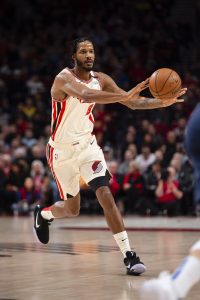 Ariza ($12,200,000), Swanigan ($2,033,160), and Gabriel ($1,445,697) for Bazemore ($19,269,662).
Ariza ($12,200,000), Swanigan ($2,033,160), and Gabriel ($1,445,697) for Bazemore ($19,269,662).
- Using Ariza’s $12.2MM salary, the Kings could have taken back up to $17.2MM (his salary plus $5MM) in a simultaneous trade. That’s not enough to accommodate Bazemore. Even adding Swanigan’s salary doesn’t quite get the Kings there, since Ariza’s and Swanigan’s combined salaries total $14,233,160. Sacramento could have taken back $19,233,160 using that pair, but that just falls short of Bazemore’s $19,269,662 salary. As such, all three outgoing Kings players had to be aggregated together to take on Bazemore.
- Minimum salary exception for Tolliver ($1,620,564).
- Like the Blazers did with Gabriel, the Kings can take on Tolliver using the minimum salary exception since his minimum deal is just for one year.
More notes on traded player exceptions:
- For contracts signed under the NBA’s current Collective Bargaining Agreement, a team’s outgoing salary for matching purposes is the guaranteed salary rather than the total salary. For example, a player with a $2MM partial guarantee on a $10MM salary would only count for $2MM for salary-matching purposes. Between the end of a team’s season and June 30, the outgoing salary for a traded player is the lesser of his full current-season salary and his guaranteed salary for the next season. We have more details on this rule in a separate glossary entry.
- When determining whether a team is over the cap or the luxury tax line for traded player exception purposes, the team’s total salary after the trade is the deciding factor.
- Trade exceptions created in non-simultaneous trades can’t be combined with one another, with other exceptions, or with a player’s salary; they can’t be used to sign a free agent (except in a sign-and-trade); and they can’t be traded outright to another team.
- Teams that are under the cap before a trade and go over the cap as a result of the trade can’t create a trade exception as a result of that deal.
- For salary-matching purposes, future draft picks or the draft rights to an unsigned player aren’t taken into consideration.
The traded player exception is one of the CBA’s more complicated tools and can make it challenging for over-the-cap teams to navigate the trade market. It’s undoubtedly simpler to use ESPN’s Trade Machine to determine whether a deal is legal, but examining the rules and figuring out exactly how a blockbuster trade breaks down can provide rewarding insight into an NBA club’s management of its cap.
Note: This is a Hoops Rumors Glossary entry. Our glossary posts will explain specific rules relating to trades, free agency, or other aspects of the NBA’s Collective Bargaining Agreement. Larry Coon’s Salary Cap FAQ was used in the creation of this post.
Earlier versions of this post were published in 2012 and 2018 by Luke Adams.
Photos courtesy of USA Today Sports Images.
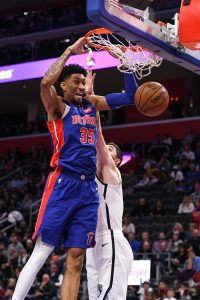 Christian Wood
Christian Wood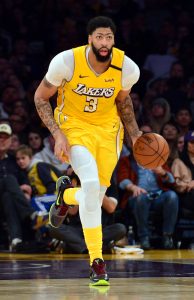
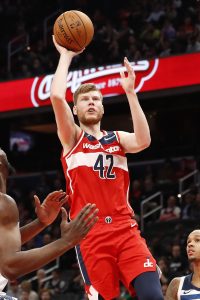
 In December, the Jazz
In December, the Jazz  Ariza ($12,200,000), Swanigan ($2,033,160), and Gabriel ($1,445,697) for Bazemore ($19,269,662).
Ariza ($12,200,000), Swanigan ($2,033,160), and Gabriel ($1,445,697) for Bazemore ($19,269,662).
